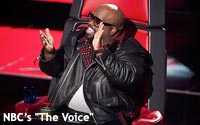entertainment
Official Hashtags Help Keep Conversation Going
- by Aaron Baar , January 29, 2013
 The simple practice of displaying an official
program hashtag at the beginning of a television show can increase the social conversation by nearly two-thirds.
The simple practice of displaying an official
program hashtag at the beginning of a television show can increase the social conversation by nearly two-thirds.
According to the social analytics and monitoring company Brandwatch, viewers tweet about a particular program about 1,200% more when the show is airing and are twice as likely to use the official hashtag on broadcast day. Combined, the two statistics amount to a 63% greater likelihood that programs publicizing their official hashtags will become part of the Internet conversation.
The study from the U.K.-based company analyzed Twitter conversations about five of the top U.S. and U.K. television shows during 2012. Three shows -- the U.K.’s “The Great British Bakeoff,” and U.S. shows “The Voice” and The “Biggest Loser” -- stood out by consistently engaging with their audience before, during and after the programs aired with the clear use of their official hashtags. (The study also broke down leaders by category. “Glee” in the U.S. was the leader among dramas, while “BBC Question Time” in the U.K. led factual programming. The U.S.’s “How I Met Your Mother” led comedies, while the U.K.’s “Hollyoaks” led the soap category. For sports programming, the leaders were “Soccer AM” in the U.K. and “SportsCenter” in the U.S.)
advertisement
advertisement
Consumers are increasingly using multiple media at the same time, particularly when watching television. According to a recent poll of 1,000 U.S. consumers from KPMG, 42% of the respondents said they watch TV and access the internet via a laptop or PC at the same time. Another 17% said they watch TV while using a smartphone. Just over a fifth (22%) said they were using these devices to access a social media site while watching TV.
To capitalize on this growing trend of “dual-screening,” the Brandwatch study reveals that there are a few simple steps programmers can take to increase the conversation around their shows. Among the most successful programs in the Brandwatch study, 83% used their official hashtag in most or all of the tweets they issued, and 61% regularly tweeted during the broadcast time to keep the conversation relevant.





Aaron, any chance of seeing what the actual questions were? The wording used here tends to imply that is their "usual" behaviour, but the data seems to accord more with a question "have you ever used...". These are two fundamentally different things!
Hey John, the research was conducted by monitoring tweets using crawling hardware and analytics. Would be happy to share the full research with you if you're interested - there's more on it here: http://www.brandwatch.com/2013/01/is-twitter-transforming-how-we-watch-tv/
Thanks Joel. I understand the data mining element of the twitter data, but I was more interested in the KPMG data of the n=1,000 respondents. 42% watching TV and accessing the internet at the same time seems a very high number. The reason I say this, is that TV audience data is structured around "the average programme minute". That is, if we say 1 million watched we mean that if you chose any minute of that programme the 'best estimate' is 1 million. But to the juxtapose the KPMG data the (unstated) inference is that in any one minute 42% of that million were also accessing the internet. I think it is a stretch to even say 42% at any time during the programme. I suspect it is more like "have ever accessed the internet (or its "... in the past 4 weeks" or ".., in the past 7 days" variant) while watching TV" question. That is, we'd simply not be comparing like data.
Right, I see, sorry. Well I had nothing to do with the KPMG data, but my interpretation would be that it was a question that determines whether respondents had EVER taken to Twitter while watching TV. However, I'm not much of an expert in traditional research methods, so don't have too much insight to add to your points, I'm afraid.
Hope you found our data interesting nonetheless, cheers - Joel
Thanks for the post. No need to analyze the data... this is simple common sense. And the value of Hashtag's is clear... they are the water cooler of the social age.